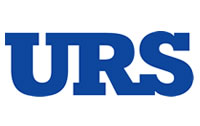Avoid gray areas by keeping team objectives consistent and linked to the big picture
By Tom Moriarty for Plant Services Magazine
“Last week he told us to do daily scheduling; the week before that he told us to focus on closing out work orders as fast as we can. We have a work order priority system that says we have 10 days to close out priority-three work orders. We never know what the heck we’re supposed to focus on and what rules we’re supposed to play by! If he wants us to get things done, he shouldn’t keep changing what he wants!”
This was the irritated response I got from a crew supervisor during a recent plant assessment when I asked, “What are your priorities?” As our conversation went on, the sarcasm and discontent grew. We had entered a sort of “Twilight Zone,” the surreal world created when managers think they are doing something that should be easy to implement when trying to correct some issue.
Why does this Twilight Zone occur? The manager becomes aware of some performance area that needs to be improved. He or she acts by issuing an edict to fix the deficiency. The manager often does this without sufficient data or a clear understanding of the true causes. Maybe effective systems aren’t available to obtain information. Because of that, the fix is often inexact or misguided. The manager gets frustrated when lower levels of the organization grumble or have trouble adjusting to changes.
Conversely, the workforce can’t comprehend why the manager can’t just ask them what will work before changes get made. People in the workforce probably know the true cause of the problem, and they believe they have a better way to solve the issue. But the manager didn’t ask.
Before we beat up the manager too much, keep in mind that supervisors and the workforce often know about problems. The supervisors and team members may not offer solutions at all, or they may offer solutions that are not reasonable or attainable given the manager’s constraints. They often aren’t aware of all the constraints the manager is dealing with.
The manager, believing that the orders have been issued and that supervisor will be responsible to make sure the orders are followed, moves on to the next problem. Days or weeks later, another burr gets under the manager’s saddle, and he or she repeats the pattern.
People want consistency. Frequent changes make them cranky.
All organizations must have a strong link between organizational objectives and the work group’s objectives. When the link is unclear or weak, it’s difficult to develop and maintain the operating mechanisms (work management processes) that help the organization stay focused.
When operating mechanisms are lacking, there will be too much variability. Variability means the system is not under control or stable.
If you’re in the Twilight Zone, how do you get out? Just like with any intervention program, the first step is to realize that you have a problem. The next step is to take a hard look at your organization’s objectives and your work team’s objectives. Are they linked? Can anyone see and understand how the work team contributes to high-level organizational objectives? If not, start there and make the link clear and measurable.
Next, reduce variability and uncertainty by designing operating systems and measures that are detailed enough that people know what is expected of them. Managers must focus on providing the training, resources, and tools needed to enable the team to perform. As consistent data is collected and analyzed, the manager can initiate informed and focused adjustments that don’t overwhelm or frustrate the work teams.
As you work on these strategic improvements, I strongly encourage managers to establish the best relationship possible with their supervisors and work teams. Spend more time with them. Ask them about the problems they see and what they think can be done about them. Give them some insight into the constraints that you have. Have a conversation and listen to their ideas. Take responsibility for building trust.
Know your current position. Then set out on the best course of action. Go forth and do great things.


















